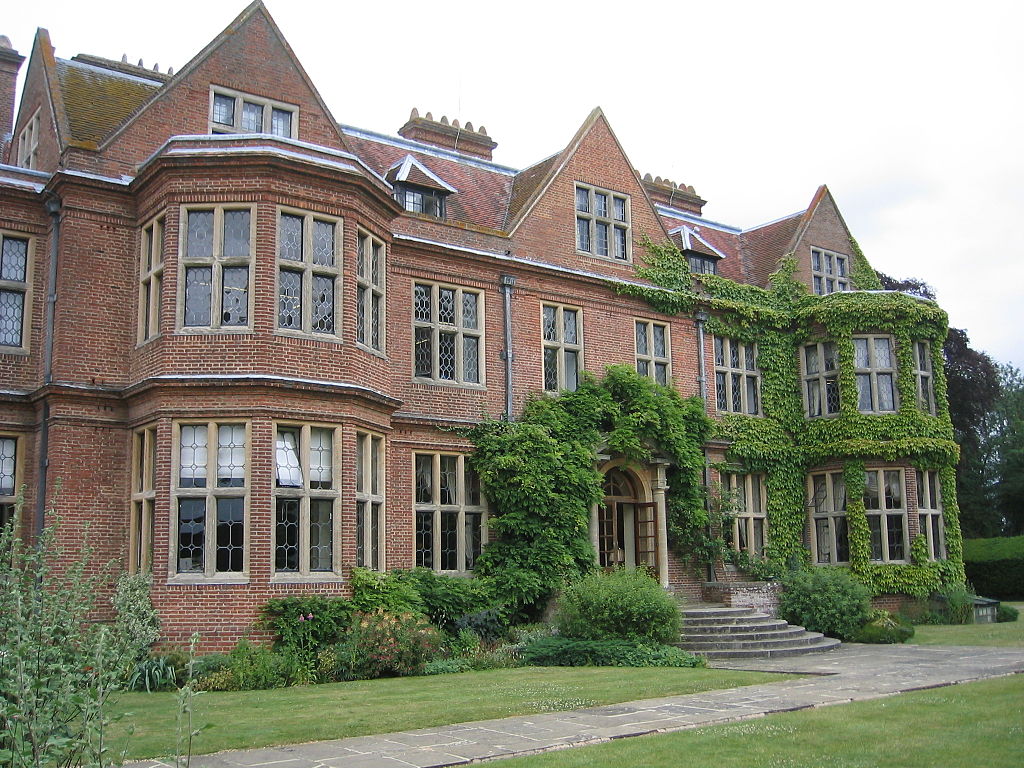#5373. Brick Facade of an English Country Manor with Tudor Revival Elements
Before us stands a magnificent example of English country architecture executed in traditional brick style. The facade of the building demonstrates characteristic features of the late Victorian or early Edwardian period with elements of Tudor Revival.
Particularly noteworthy is the geometry of the facade with its rhythmic alternation of pointed gables, creating a dynamic silhouette of the building. Bay windows with numerous leaded glass panes add volume to the composition and provide abundant natural light to the interior spaces. The brickwork of the facade is executed with exceptional craftsmanship, with architectural elements being accentuated.
A characteristic feature is the partial covering of the facade with climbing plants (ivy), which gives the building a romantic appearance and connects the architecture with the surrounding landscape. This reflects the English tradition of integrating architecture into its natural environment.
The central entrance is emphasized by an arched portal and wide steps leading to it, creating a distinguished approach to the building. The roof, covered with traditional tiles, is complemented by small dormer windows, adding expressiveness to the upper part of the facade.
Overall, the facade demonstrates a harmonious combination of formal architectural composition with elements of picturesqueness characteristic of English country architecture.
